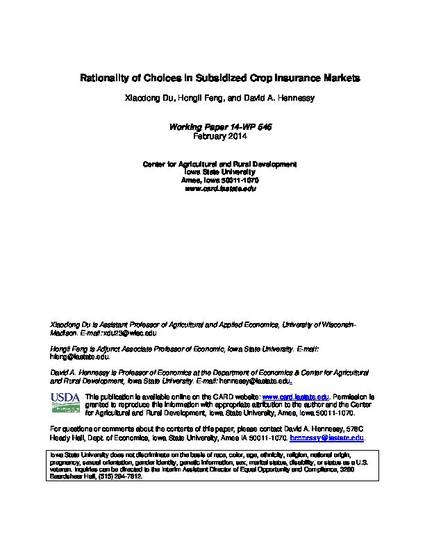
The U.S. crop insurance market has several features that set it apart from other insurance markets. These include:(a) explicit government subsidies with an average premium subsidy rate of about 60% in recent years; and (b) the legislative requirement that premium rates be set at actuarially fair levels, where the federal government sets rates and pays all costs related to insurance policy sales and services. Bearing these features in mind, we examine to what extent farmers’ crop insurance choices conform to economic theory. A standard expected utility maximization framework is set up to analyze tradeoffs between higher risk protection and larger subsidy payments. Given an actuarially fair premium, a rational farmer should choose either the coverage level with the highest premium subsidy or a higher coverage level. Evidence from a large insurance unit level dataset contradicts this theoretical inference, and so suggests anomalous insurance decisions. Mixed logit estimation reveals that larger out-of-pocket premium reduces the probability that an insurance product is chosen.
Available at: http://works.bepress.com/hongli-hennessy/21/
